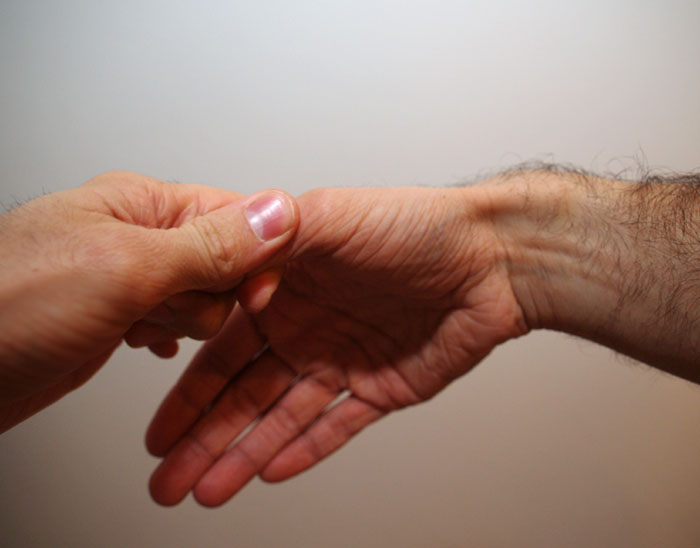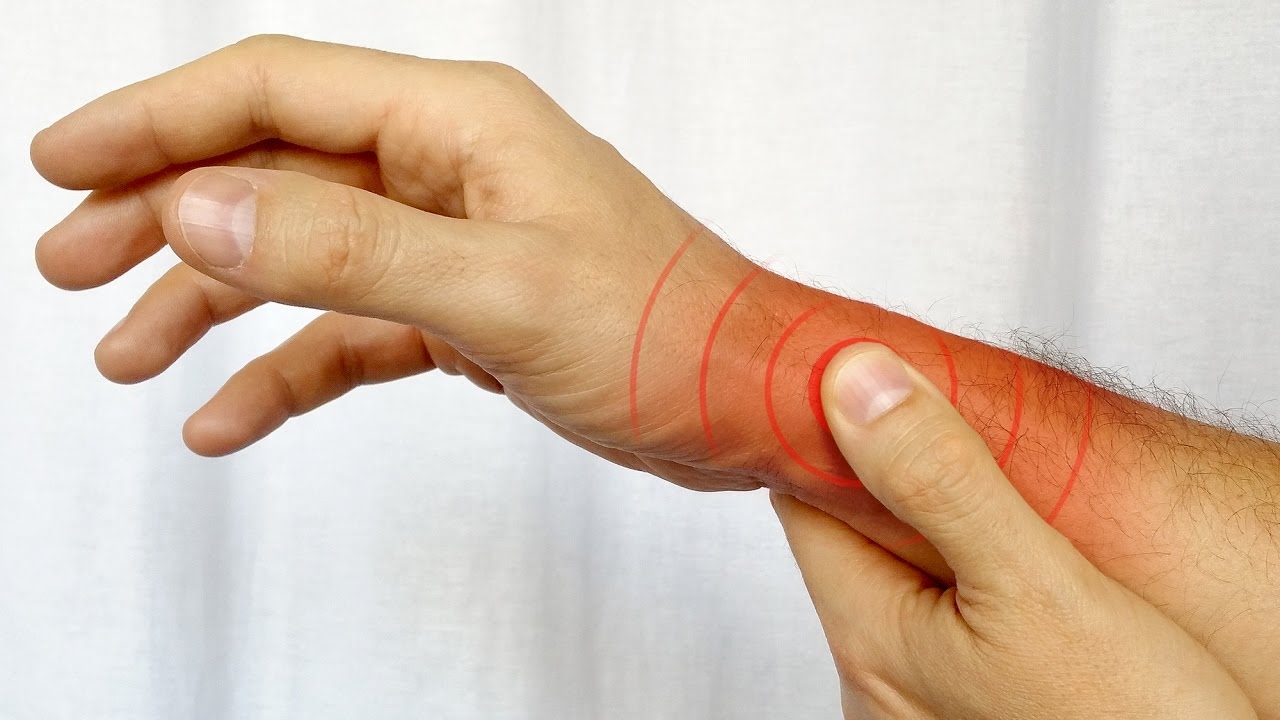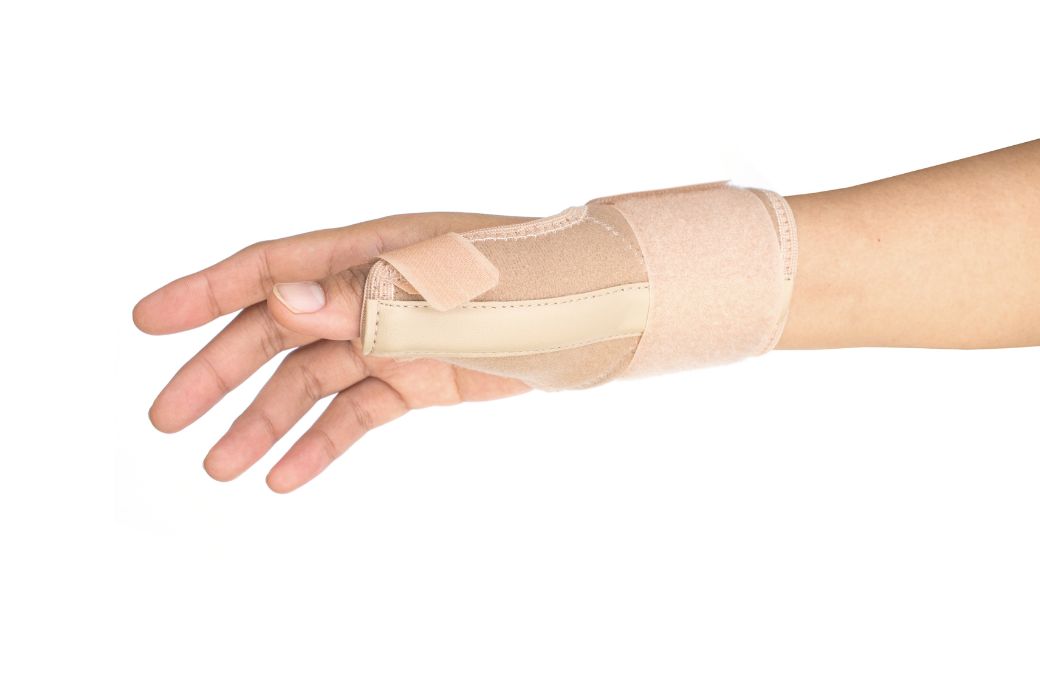De Quervain’s tenosynovitis, also referred to as De Quervain’s disease or De Quervain’s syndrome, is a condition affecting the tendons around the base of your thumb, causing pain and swelling.
Understanding the symptoms, causes, diagnosis methods and treatment for DeQuervain’s tenosynovitis can help identify this condition, fast-tracking the recovery process and preventing any long-lasting effects. This blog will discuss all you need to know about De Quervain’s disease, so read on to find out more.
What is De Quervain’s Tenosynovitis
The term tenosynovitis is any reference to the inflammation or swelling of the tendon sheath (synovial membrane), typically those found at the wrist. As the thumb tendons lie close to the bones of the wrist, when they become inflamed they can be very painful and make moving your thumb difficult.
Tendons are what attach your muscles to your bones, allowing movement as they contract and relax. Surrounding tendons are membranes filled with synovial fluid that help protect the tendons whilst they move. When these membranes become irritated, damaged or infected, inflammation can occur causing pain and swelling, making movement more difficult.
Sometimes, the terms tenosynovitis and tendonitis are used interchangeably, however, in the case of De Quervain’s disease, tenosynovitis is the correct term. The ‘syno’ aspect of tenosynovitis refers to the inflammation of the synovial membrane, whereas tendonitis refers to the inflammation of the tendon itself.
Causes De Quervain’s tenosynovitis
The main cause of De Quervain’s tenosynovitis is due to chronic overuse of the hand and wrist. Performing the same repetitive movements each day can eventually lead to irritation of the structures around your thumb. This condition can occur due to everyday movements, such as lifting up a child or carrying heavy bags of shopping by the handles.
Sports that tend to see a lot of De Quervain’s tenosynovitis cases include tennis and golf, or any activity that requires you to grip something whilst bending your hand and wrist.
De Quervain’s can also occur as a result of rheumatoid arthritis, or sometimes from a direct blow or injury to the thumb itself.
De Quervain’s tenosynovitis is also more common in women that are 40+ years old, or people who perform the causal repetitive hand movements as part of their hobby or job. De Quervain’s is also found to be more common in people who have previously injured their wrist as scar tissue from the injury can restrict your tendon’s movements.
Symptoms of De Quervain’s tenosynovitis
The most noticeable symptom of De Quervain’s tenosynovitis is the pain it causes. This pain tends to occur at the base of your thumb, however, it can also radiate up into your forearm. From person to person, the symptoms you experience may differ, with some suddenly feeling an influx of pain, whilst others feel it develop slowly. Some other common symptoms include swelling and tenderness at the base of your thumb, difficulty moving your thumb and/or wrist, and occasional ‘clicking’ or ‘snapping’ of your tendons when you move your thumb.
Diagnosis of De Quervain’s tenosynovitis
The most common method of diagnosis for De Quervain’s disease is the Finklestein test. When performing this test, if the person complains of pain when they make a fist with their fingers wrapped around their thumb whilst bending their wrist towards their little finger side, a diagnosis of De Quervain’s tenosynovitis can be confirmed (if coupled with swelling and inflammation).
In some cases, De Quervain’s can be diagnosed via an ultrasound or MRI, also helping to find the cause of the condition, such as arthritis.
Treatment for De Quervain’s tenosynovitis
Once there has been a confirmed diagnosis of De Quervain’s, treatment can take two different courses; this being non-operative treatment or operative treatment.
Non-operative treatment can first start with resting your wrist from its usual activity, as well as a course of non-steroidal anti-inflammatory drugs (NSAIDs) to help reduce swelling and inflammation. If this does not help, then the next course of treatment will usually involve a steroid injection into the surrounding tendon tunnel, with the aim of reducing the inflammation. When coupled with hand therapy, a splint and analgesia, this non-operative treatment has between 70-80% success in treating De Quervain’s tenosynovitis. If found to be unsuccessful, another injection can be administered, however, it is advised once both injections are taken and unsuccessful, surgery should be considered.
For the operative route, surgery involves reconstruction of the tendon tunnel once the inflammatory tissue has been removed. This procedure is performed under general anaesthetic so that a 3-4 cm incision can be made at the end of the wrist. Once the procedure is complete, absorbable sutures hold the incision together whilst dressing is applied to protect the thumb during recovery.
Once you have received operative treatment for De Quervain’s disease, it is important to keep your hand dry and clean for at least 2 weeks to allow recovery. 48 hours post-surgery, you should be able to participate in hand therapy, designed to encourage movement of the tendons to avoid nerve adhesions.
During your two-week recovery period, driving should be limited. However, if you have received surgery to your left hand, you should not drive until you are fully recovered as changing gear and using the handbrake may be difficult to perform.
If you are thinking about returning to work post-surgery, considerations should be made depending on your job. Light manual workers can return 2-3 weeks post-surgery, however, heavy manual workers should not attempt exerting maximal grip strength for at least 6 weeks after your operation.
If you are concerned you may have De Quervain’s tenosynovitis, it is important to contact your healthcare physician in order to make an accurate diagnosis. Ignoring the signs and symptoms of De Quervain’s may lead to limited hand and wrist movement or bursting of the tendon sheath which may lead to further problems in the future.
Get in touch today with Ladan Hajipour for expert advice and treatment on all hand and wrist conditions.




